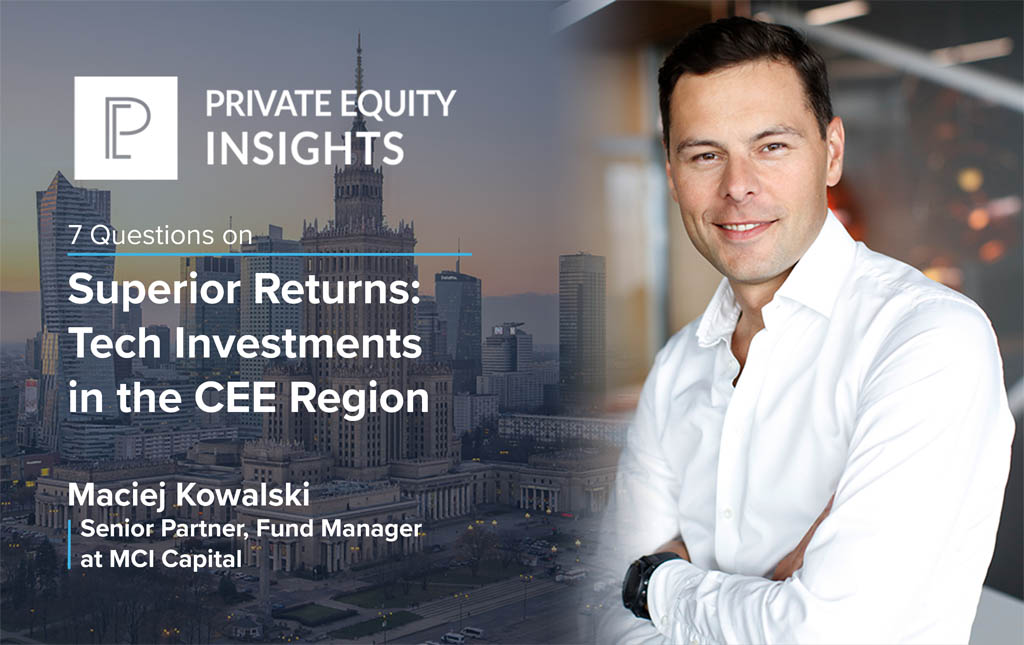Q1
In terms of our investment strategy, we firstly look at purely digital companies, so business models that are based on the digital economy.
The second is digital infrastructure. We believe strongly that the digital economy will grow, so it will require infrastructure, which will follow (and support) the growth of the digital economy.
Our third pillar is digital transformation. Some companies that have roots in a more traditional economy, will transform into digital or hybrid business models. Historically, this segment was underrepresented in our portfolio, and we were more focused on pure digital companies and infrastructure companies, due to a lower risk profile of such opportunities. With transformation, there is always some transformation risk. Nevertheless, in the aftermath of the COVID pandemic, we will see an increasing number of businesses in need to change towards digital or hybrid business models.
In terms of sectors, we believe that there will be opportunities in professional services, especially among companies supporting digital transformation, including software as a service (SaaS) or wider value chain of e-commerce segment.
We concentrate on acquiring majority stakes. That allows us to efficiently navigate the value creation process and provide our valuable input. We seek to invest around €30 to €70 million per investment.
Our 20-year experience in digital investments and focus allow us to record over 25% IRR
Q2
In general, Covid-19 had either a positive or very positive influence on our portfolio. In some cases, it was neutral, and we only had a couple of investments that were negatively influenced, in travel and mobility segments, now we are seeing those segments recovering.
In terms of strategy, the pandemic does not bring major changes to our strategy, rather confirms that our direction is accurate. We may see some shifts of focus within the digital sector. Covid accelerated maturity in some areas of digital products, especially in SaaS, communication and e-commerce value chain. Some segments are now are also normalizing in the post-covid time.
When you look at the valuations of some companies like zoom, for example, it rocketed off to the moon very fast in the early pandemic, but eventually, it levelled off. In other words, we don’t make decisions or change strategies based on an anomaly although it’s fair to say that those anomalies had ripple effects and digitalized business processes and made investors and managers realize that being digital is safer. In consequence, those ripple effects will be seen long after covid is over and it will benefit all kinds of digital enablers.
Therefore, SaaS companies, infrastructure companies that are responsible for supporting the digitalization processes or allowing the digital economy to grow and to stabilize and professionalize will be interesting investment directions going forward.
Our sectoral and geographical diversification also helps. We saw various lock-down dynamics among European countries and how customer behaviours were affected. That allowed us to share experiences between our portfolio companies and enjoy certain economics of scale and diversity of ideas. In a very dynamic environment, being able to use very up to date real-life experience is invaluable.
Q3
Moreover, we are seeing that a lot of funds, see this as a perfect opportunity to transform from traditional funds, and they are transforming into hybrid or digitally centric funds. But in many cases, it still implies the traditional mindset on a digital asset. Of course, you can always buy people, advisors and solutions, but you cannot change the mindset of an organization very fast.
Throughout our history, being historically a growth and early stage investor, MCI has experienced multiple business models, markets and execution strategies in almost all subsegments of the digital economy. That allows us to have a different depth in our work and cooperation with partners and managers of our portfolio companies. This allows us to run an efficient due diligence process (from buy-side and sell-side angle) and have efficient relationships in the value creation process.
Additionally, our digital focus allows us to benefit from a snowball effect increasing with each company we analyse, invest in, and relationships with all managers or advisors, etc.
Consequently, we don’t want to look at the full digital economy spectrum, but rather home in on specific subsegments. And that gives us again, a much deeper experience and, therefore, our ability to create value and communicate with portfolio companies becomes stronger.
Hence, we believe that transforming traditional funds into digital funds requires a unique set of skills. With regards to investment processes, teams, motivation, packages, planning, everything is different. So, if it’s not in your DNA, it’s harder to execute outstanding profits. We believe it needs to be in your DNA. And we believe that technology is deeply in our DNA. Beyond this, I think that what differentiates us is that we have much more flexible holding periods. In a digital economy, it’s always a trade of time and profitability of a given investment. And from time to time, the exits that arise are important because in the segments you need to decide between how fast and how dynamically the company can grow. And that sometimes means sacrificing the bottom line. And I think that the funds with inflexible holding periods will need to sacrifice a bit of value. In our case being an evergreen fund, we can be much more flexible. So that’s why we can be very good partners for entrepreneurs and managers who plan their development for a longer period.
Another differentiating factor is in our execution. When I compare how we work with portfolio companies with other funds’ methodologies, our involvement is much more hands-on. That doesn’t mean that we replace management, we just help them in a more granular and digital-savvy way, either by members of the investment team or senior advisors we involve.
Q4
It doesn’t influence our strategy that much. Our strategy is focused on making the most out of the observable digital trends. So, whether we are publicly listed or non-publicly listed, doesn’t make too much difference. From the operating perspective, it makes our processes and operations more transparent. If you are a private fund, your information to the market about the effect of your work will happen once an investment is exited or the fund is closed. I guess we are much more informative about our ongoing performance.
Q5
It’s a positive outlook, although we don’t have as many unfair advantages as we had 10 years ago, such as the long perspective of EU funds, very low labour cost or dynamically increasing exports. Nevertheless, the region still has a handicap vis-à-vis Western Europe, as the cost of labour is still considerably lower and various penetration/saturation levels are lower.
I am referring especially to digital economy. We are still very far from saturation in almost all major subsegments of the digital economy. Consumer demographics in CEE are favourable to support digital adaptation being faster than in Western Europe.
Our region’s great advantage is obviously the quality of technical talent and entrepreneurship. With increasing the quality of infrastructure and limited legacy infrastructures we believe that digital CEE will be growing faster than Western Europe. Closing of the financing gap in the earlier stages of digital investments though private and sovereign funds will surely improve this trend.
A very comforting fact is that CEE is no longer a region of local copycats. A lot of proprietary ideas are being financed and developed. A number of those companies will reach critical mass, and we can further help them to grow, optimize and enter new markets.
The power of the region is visible in the last moves of tech giants such as Microsoft, Google, and Amazon, that are in this market not only with their digital products but increasingly with their infrastructure and operation. This will obviously further fuel the growth of local digital economies.
Q6
Due to the nature of the industry, it’s important to have your eyes and ears open, because a lot of things change. We see significant trends in business process digitalization in SaaS model and increasing use of AI and automation in various operating processes.
With the quality of talent in the region and increasing funding, we believe that in those segments we may see CEE companies becoming regional, European or even global leaders.
Another interesting area is next-level automation products such as robotics and IoT. With the increasing cost of labour in the region, we see automation being an important area to allow CEE companies to stay competitive in the global marketplace.
Other interesting areas are next-gen communication or distributed infrastructure. We keep an eye on new trends like metaverse, which do not yet have a critical mass but soon may become investable.
A very interesting cross-sector trend is sustainability investing. Since digitalization is a sine qua non for sustainability and process for digitalization is analogous to digitalization processes, and the climate change becomes a pressing problem, we will see a number of opportunities in this space.
Q7
We want to stay at the forefront of those trends. So, we understand them and are in regular contact with companies and with experts in the field, because it’s how we create our ecosystem. We believe in the snowball effect, so not only follow the hype but take a long-term bet on all our strengths. Of course, keeping the innovation at the edge of our organization, and having our eyes and ears open to anything that may grow into the next big thing.
We want to stay up-to-date and take pole position in new segment to be investor of choice for companies reaching buyout size and want to become a regional leader.
This is how we see our role: understanding all ins and outs of the market and business model, involving the right team of experts and create the best possible environment for management team and company to grow. That may mean organic growth, but we see a lot of buy and build opportunities accelerated through M&A strategy.
About MCI Capital
MCI’s mission is to deliver high and stable rates of return for its Investors by creating value and supporting top performing teams of entrepreneurs and managers in achieving their business goals. This is done by means of capitalising on the MCI’s brand image, its professional staff competence and best global industry practice.
MCI Capital is one of the most rapidly growing Private Equity groups in the European region. The Group specialises in digital transformation services involving investments in pure play internet models (pure players), companies adapting to digital business models and those operating in the development market for internet infrastructure. Read more at: https://mci.pl/en



